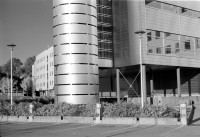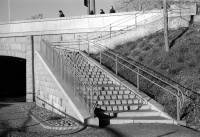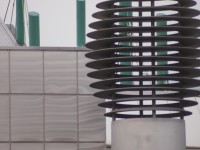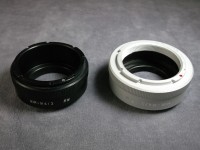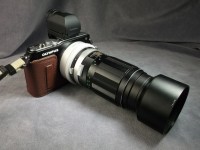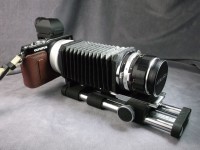One of the interesting side-effects of the small register (flange distance to the film/sensor) of the mirrorless digital system cameras is the possibility to use almost any make and model of the older manual lenses with them, provided that the suitable mechanical adapter can be made, or already exists.
For Miranda lenses, the adapter situation had been tricky for quite a long time, mostly because the dual-mount Miranda bayonet is somewhat difficult to make. No ready-made Miranda-to-any adapter existed, unless you count the very rare Miranda’s own ML (Miranda-to-Leica/m39) adapter. Of course, some skilled enthusiasts have made their own adapters.
Fortunately the situation changed around the beginning of the year 2013: a fellow going by the eBay pseudonym of ramir73 started making Miranda lens adapters for the mirrorless digital cameras; he has made adapters for at least Micro 4/3, Canon EOS M, Nikon, Fuji and Sony NEX camera mounts.
I have two versions of his Miranda-to-m4/3 adapters. Both versions fit quite nicely to both the lens and the body – maybe just a tiny bit of tighter tolerances would have been better – and the dimensions are correct for infinity-focusing. The original version (black one on the left in the picture below) is quite good in itself, and nicely finished; however, it has two major problems: first, the mount is bayonet-only, i.e. the 44mm screw mount is missing, so accessories like reverser rings and extension tubes, or older screw-mount lenses, can’t be used. Second, the alignment between the two bayonets , Miranda and m4/3, is some 10° askew; insignificant when used with round lenses, but it created a significant problem with the Focabell bellows.
The latest incarnation (silver one on the right), which I got just a few days ago, addresses these shortcomings: the mount is now the correct dual-mount (bayonet/m44), and the Miranda bayonet and the m4/3 bayonet are now in line with each other. The maker was concerned about the tolerances of the screw mount, but so far everything I have with 44mm screw mount has fitted without problems. The finish has now changed to very nice looking matt aluminium; the matt black in the hand-painted interior is however a bit on the thin side.
The old (black) and the new (silver) Miranda-to-m4/3 adapter.
Olympus PEN E-PL3 with the new adapter, equipped with Auto Miranda 135mm f/3.5 lens.
Olympus PEN E-PL3 fitted to Miranda Focabell bellows and an Auto Miranda 50mm f/1.9 lens.
Please see the part 2 of the review here.

